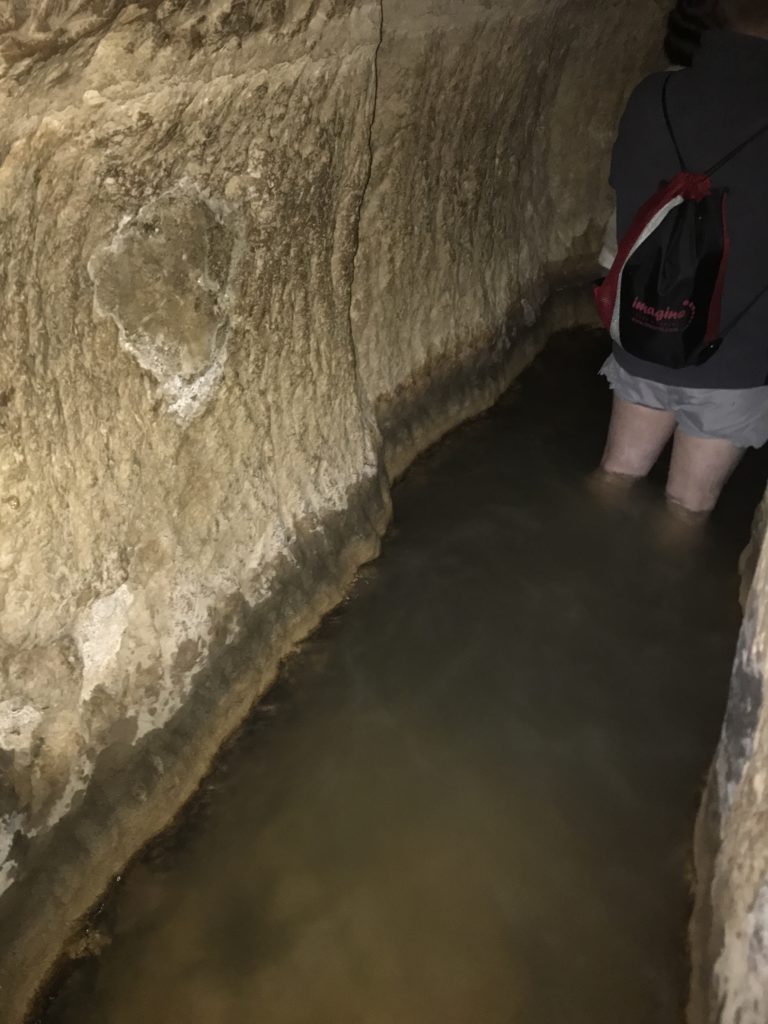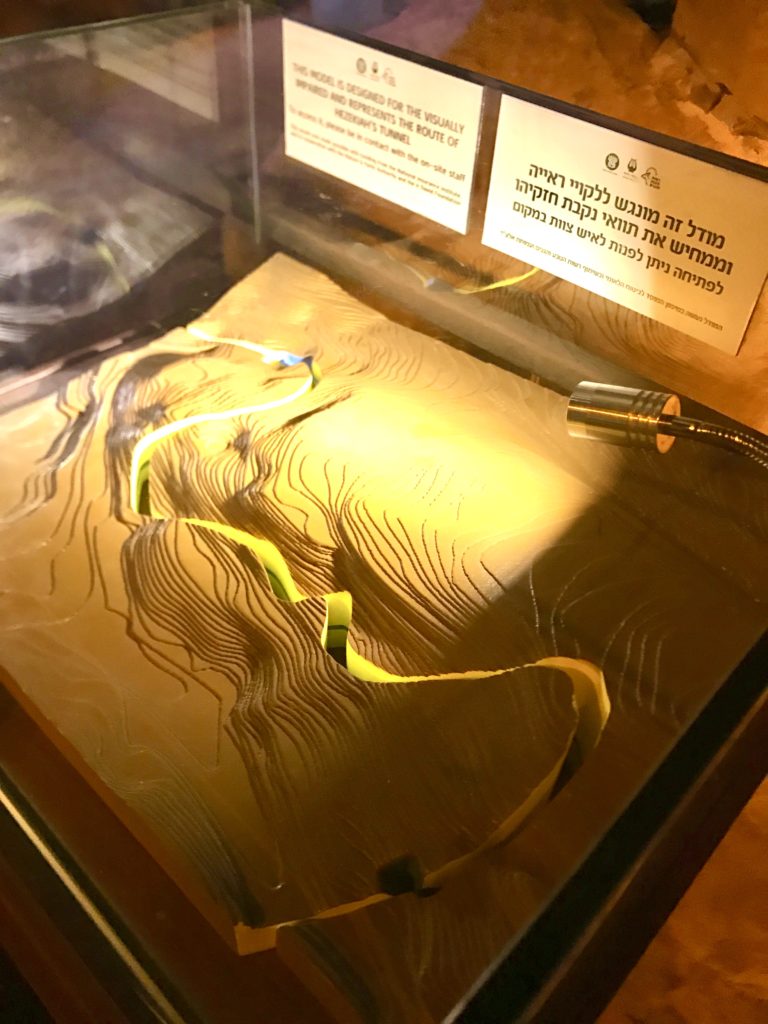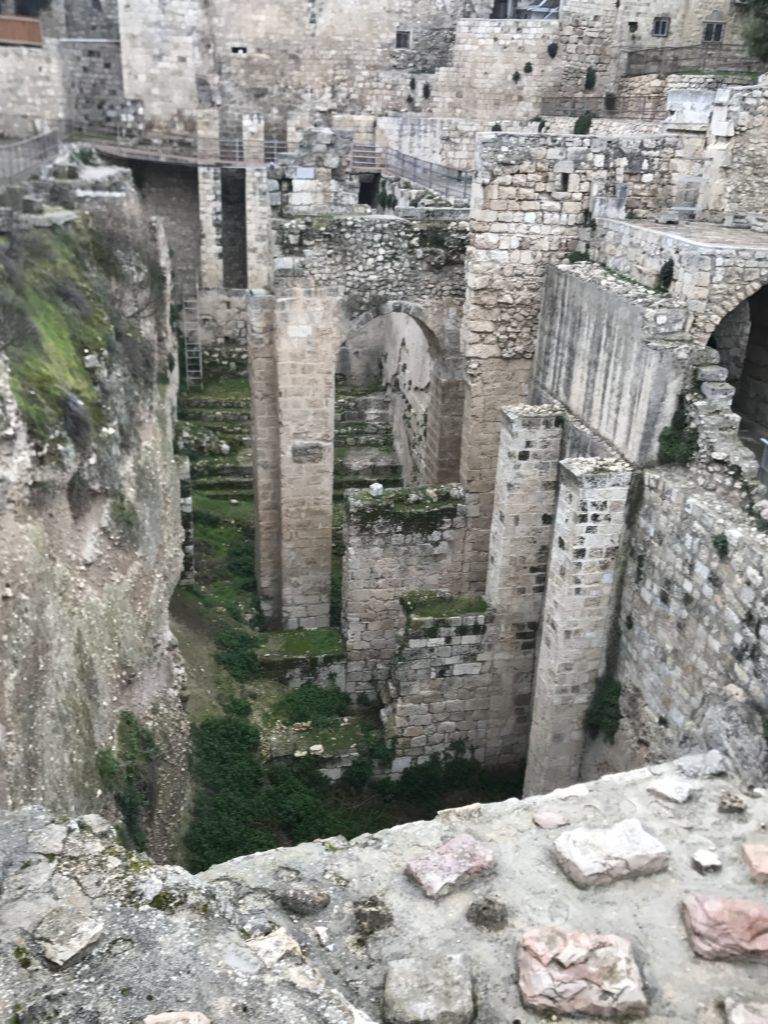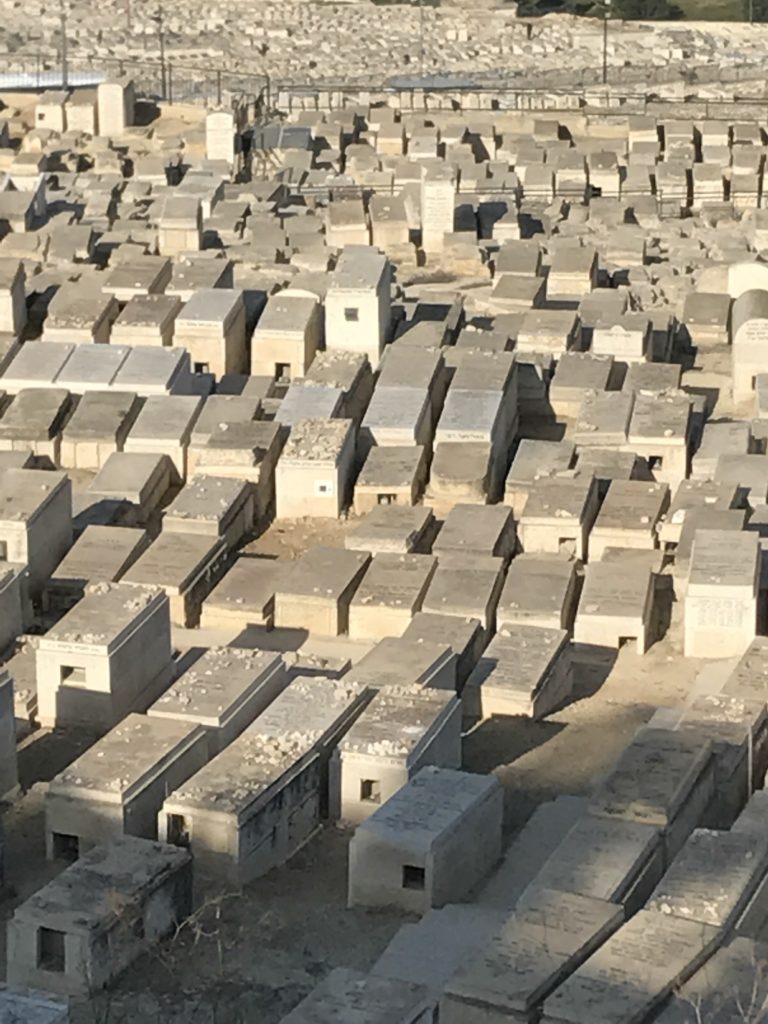I hate three things:
The cold, anything creepy, anything scary.
But I do so love an adventure.
Not one to shrink from challenges, I thrive on new experiences and new places. So when Hezekiah’s watery Tunnel exploration was offered for the not so faint of heart, and The Preacher asked, “Are you in?” after just the tiniest breath of hesitation which I hoped no one noticed, I plunged all in, “Yes!”
Dressed in old clothes and tennis shoes that had seen better days, excitement and dread filled my mind. Rumors spread like wildfire on an Oklahoma prairie. Everything was whispered from “Your feet will get wet,” “Water will be up to mid-thigh or maybe even to your waist in places,” “You won’t be able to stand upright,” to, “It’s very narrow and pitch black.”
Not knowing fact from fiction, I knew I had to get over my anxiety and go out on this limb or I would regret it when everyone returned and told rip-roaring stories of hazards overcome and victory achieved. How often does a gal get to trudge through subterranean Jerusalem like the ancients did over 2700 years ago?
My hangup?
Not claustrophobia,
Not fear of a can’t-see-your-hand-in-front-of-you-eye-pitch-darkness,
Not fear of wandering below ground in a sodden ancient cave,
Not really even getting wet. It was a fear of being immersed in icy water for an hour, teeth rattling and miserable.
But this Indiana Jones venture left me pleasantly surprised after the initial gasp induced plunge into the mostly knee high wetness. The water was cool, but not frigid and the nervous energy I was emitting like an overheated radiator, made it tolerable.
Wandering this tunnel, dug in the late 7th and late 8th BC was one of the coolest things I’ve ever done. “As for the other events of Hezekiah’s reign, all his achievements and how he made the pool and the tunnel by which he brought water into the city are they not written the book of the annals of the kings of Judah?” 2 Kings 20:20
Stretching inside the walls from the Gihon Spring to the Pool 0f Siloam, the tunnel was thought to be built by Hezekiah to thwart seige by the Assyrians. Because these water sources were already a supply of water for the city, the tunnel may have been as much about withholding water from the enemy as it was for drinking water.
Before the tunnel, any water unused by the city was dumped into the Kidron valley outside the walls, thus a welcome gift to the unwelcome invaders.”When Hezekiah saw that Sennacherib had come and that he intended to wage war against Jerusalem, he consulted with his officials and military staff about blocking off the water from the springs outside the city, and they helped him.” 2 Chronicles 32:2-3
The Israelite excavators were divided into two teams with each starting at opposite ends, and chiseling through solid rock. No one knows exactly how the engineers directed these two teams underground so that they would actually meet in the middle. They carved the Siloam Inscription on the walls describing it as the middle point where the two teams met ax to ax and the water began to flow. This tunnel was recorded in the 1600’s, but not rediscovered until 1838.
After we dried out, we approached another water site. Though it was long empty, it was amazing to stand on the precipice of the 2 pools of Bethesda, from 8th cent BC, and 3rd cent BC. (The photo shows the green that was the pool and everything that was built above it in later centuries.)
Originally used to wash sheep before being sacrificed at the temple, theses thermal pools became a place of healing in later years. Archeologists have discovered several snake figurines so think it may have been a pagan place of Asclepious the God of Medicine. It was believed that an angel would come down intermittently and stir the water thus curing all sorts of ailments.
The first one to enter would receive the healing. I picture all sorts of ill and disabled lined on the bank desperate, like a swim team at the start gate, jittery and determined, waiting for “go.” The cause of the stirring may have been an overflow surge from the upper pool or a burst from the underground spring that fed it.
And on these very banks, reclined the paralytic man that Jesus healed on the Sabbath, angering the Pharisees as usual and defying Paganism at the same time. John 5:1-15
We returned to the Mt of Olives where there seemed to be miles of Jewish tombs between our vantage point and down to the Kidron Valley and up again to a spectacular view of the Temple Mount.
Reasoning for this colossal graveyard in the middle of the city?
It was the closest location to the return of Jesus through the Golden Gate and it faced the holiest of places, the Temple Mount. Even in death, they vied for position to be the first to rise and meet Christ. Strange to my western eye were all the rocks on the tombs. Jewish tradition allows the mourners to place stones on the graves as memorials and visible evidence of their visit to the grave. Like we would place flowers which wither and die, the stones remain for years.
Fear does funny things.
It freezes our limbs and our tongues like the paralytic.
It submerges us in anxiety deeper than Hezikiah’s tunnel,
And it lays stones heavy as unwelcome memories burdening our hearts.
But God’s promise of comfort is eternal and true.
What rings bold for David all those centuries ago, still rings true for us today.
“I sought the Lord, and he answered me; he delivered me from all my fears.” Psalm 34:4
And I thank you LORD for giving me courage to hand you my fears and walk tall with you.





